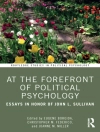A professional book aimed at practitioners and practitioners in training, this volume is the first attempt to provide a comprehensive, practical approach to the assessment and treatment of physically abused children. While there are other books that cover certain aspects of assessment and treatment, this book is comprehensive in that it covers child-specific, parent-specific, and family-specific interventions. The volume will present an overview of child physical abuse (including statistics and consequences), it will discuss outcome studies and treatment implications, and it will thoroughly discuss assessment and treatment. It will help practitioners:
- Understand children′s abuse experiences, views, exposures to violence, and it will help expose thinking errors or negative attributions. It will also help the practitioner help the children with anxiety management, anger management, social skills, and safety plans.
- Help parents with child management and development, expectations and cognitive distortions, behavior management, and discipline.
- Facilitate family communication and problem solving.
Tabela de Conteúdo
Foreword – D. Wolfe
Acknowledgments
1. Introduction and Overview
Significance of the Problem
The Challenge Before Us
Purpose and Overview of the Book
2. Characteristics and Correlates of Child Physical Abuse
Child Characteristics and Correlates
Maltreating Adult Characteristics and Correlates
Family-System Characteristics and Correlates
Community Characteristics and Correlates
What Causes Child Physical Abuse
3. Treatment Outcome Studies: Clinical and Research Implications
What Have We Learned?
What Do We Need to Learn in Research to Make Treatment More Effective?
What Would Make Clinical Practice More Effective?
Summary
5. The Comprehensive Individual and Family Cognitive-Behavioral Treatment Model
Models of Child Physical Abuse
The Integration of Child, Parent, and Family Approaches
Summary
6. Initial Treatment Considerations
Introduction
Preparation and Prerequisites
Overview of Treatment
Summary
7. Treatment of the Child: Understanding the Child′s Experiences and Behavior
Perspectives on the Child′s Experiences With Family Hostility and Violence
Contributors to Coercive or Abusive Interactions
Understanding How We Respond to Different Problem Situations
Summary
8. Treatment of the Child: Cognitive Interventions
Clarifying and Changing the Child′s View of Violence
Normalization of the Child′s Abuse-Related Feelings and Reactions
Psychoeducation About Physical Abuse
Summary
9. Child Treatment: Affect-Focused Interventions
Affect Identification and Expression
Management of Stress and Anxiety
Management of Anger
Summary
10. Promoting Children′s Effective Coping and Social Competence
Children′s Coping Skills
Social Support
Enhancing Children′s Social Competence and Developing Relationships: : Getting Along With Friends and Family
Summary
11. Adult Treatment: Cognitive Interventions
Parental Perspectives on Violence, Expectations, and Distortions
Stress Management and Family Characteristics
Views on Hostility and Violence
Expectations of Our Children
Thinking in Negative or ‘Distorted’ Ways
Summary
12. Treatment of the Maltreating Adult: Affect-Focused Interventions
Self-Management and Regulation of Abuse-Specific Triggers
Self-Management and Regulation of Anger
Self-Management and Regulation of Anxiety and Posttraumatic Stress Disorder
Self-Management and Regulation of Depression
Summary
13. Treatment of the Maltreating Adult: Behavior Management
Parenting and Behavior Management
Specific Techniques and Guidelines for Rewarding Behavior
Specific Techniques and Guidelines for Punishing Behavior
A General Review of Behavior Management
Summary
14. From Individual to Family Treatment: Bridging Through Clarification
The General Structure of Clarification
The Clarification Family Meeting
Summary
15. Family Treatment: Setting the Foundation
Overview of Treatment
Setting the Foundation
Assessment of Family Functions and Interactions
Summary
16. Family Treatment: Skills Training and Applications
Review of Initial Progress
Family Skills Training
Family Skills-Training Applications
Summary
17. Community and Social Systems Involvement
Service Settings and Systems
Summary
18. Case Examples and Applications
Case One: James
Case Two: Tanisha
Case Three: Marvin
Summary
19. Conclusions
Index
About the Authors
Sobre o autor
Cynthia Cupit Swenson, Ph.D. is Associate Professor of Psychiatry and Behavioral Sciences at the Medical University of South Carolina. Her work primarily consists of research on community-based treatment for youth violence, child physical abuse, family violence, and community violence. Currently, via a grant funded by the National Institute of Mental Health, she is involved in examining treatment for adolescents and their families when physical abuse occurs.
Dr. Swenson is a frequently invited speaker around the United States and has written numerous publications in the field. At the national level, Dr. Swenson is a member of the Board of Directors of the American Professional Society on the Abuse of Children (APSAC) where she serves on the Executive Council. Dr. Swenson also participates on a number of state Boards related to child maltreatment and youth drug court. In addition, she is involved with community service oriented Boards related to community development and youth West African Dance and Drumming. She received her M.S. in psychology from Northeast Louisiana University and her Ph.D. in clinical psychology from The Florida State University.












